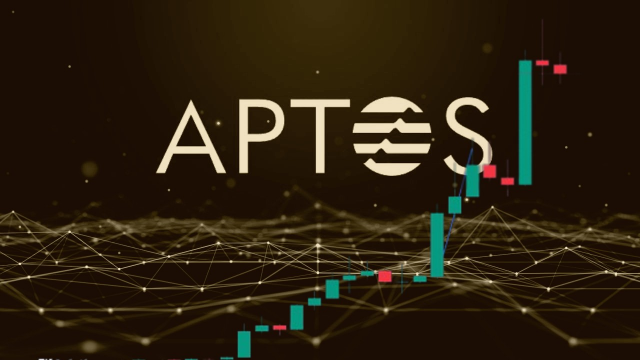
As Aptos announced the launch of its mainnet, major centralized exchanges have also issued announcements stating that Aptos’ native token APT will be launched soon. This news triggered widespread attention and discussion. This article will provide an in-depth explanation of Aptos token economics and discuss the specific distribution of community tokens.
Aptos Token Distribution Overview
According to information officially disclosed by Aptos, the distribution of APT tokens is as follows:
51.02% will be allocated to the community
16.5% allocated to the foundation
19% allocated to core contributors
13.48% allocated to investors
Among them, investors' shares will be locked for one year and will be unlocked starting from the 13th month. The tokens unlocked every month will be unlocked every month until the 18th month. Starting from the 19th month, they will be unlocked every month.
The true ownership of community tokens
It is mentioned in the Token Economics document that 410,217,359.767 APT of 51.02% of the APT tokens are held by the Aptos Foundation, and 100,000,000 APT are held by Aptos Labs. These tokens will be distributed at a monthly rate. Unlock everything after ten years. In other words, 51.02% of the community share does not really belong to the Aptos community, but essentially belongs to the Aptos official team. The official stated that these tokens will be used to promote the growth of Aptos ecological projects. Therefore, instead of calling it “community allocation”, it is better to call it “ecological fund”.
Lack of testnet node rewards
In a previous post by Aptos, it was mentioned that the contribution of testnet nodes will be rewarded. However, this part of the content was not mentioned in this token economics document. This part may be explained in the official comprehensive explanation of APT token economics that will be released in the future.
Staking reward mechanism
Both unlocked (i.e., distributable tokens) and locked (i.e., non-distributable) tokens can be used for staking and receive Staking rewards, and the rewards are not locked and can be circulated immediately. There is no doubt that this will benefit project parties and VCs, as more than 82% of tokens are currently staked.
The basis of APT staking rewards
Currently, the base APT staking reward is 7%, and the base reward percentage will decrease over time, by 1.5% per year, until 3.25%. According to official statements, 130 million tokens will enter circulation at the opening, which is 13% of the total supply. Among them, 125 million come from community shares, and the other 5 million come from foundation shares.
The pledge system and ecological development of the Aptos protocol
On August 2, Raft Labs mentioned in a tweet that Aptos designed a staking mechanism for APT that is different from other Layer 1s based on the Layer 1 and Move languages, which may bring high compound returns to stakers. Therefore, Raft Labs compared it to OlympusDAO.
Aptos refers to the design of OlympusDAO in the design of the staking model. Rewards are allocated every epoch (1 hour). The block rewards are not fixed and are proportional to the staker's token locking period. The longer the locking time, the higher the reward.
As mentioned above, a large number of locked tokens can participate in the staking of the network, which is likely to form a huge Ponzi model, and the total supply of tokens will also increase accordingly. However, in the early days of token issuance, most of the circulating chips in the market were concentrated in the official hands of Aptos, and there were not enough tokens to participate in the pledge. Therefore, APT tokens may experience growth as supply exceeds demand.
The future development of Aptos ecosystem
The development of the ecosystem determines the growth space of a Layer1 token. Looking at the Aptos ecosystem, we can see that a total of 215 projects are about to be deployed in the Aptos ecosystem. For Mova language developers, this is not difficult. Previous developers have already clarified the project deployment path for Aptos ecosystem developers. Therefore, the upcoming projects in the Aptos ecosystem now cover DeFi, infrastructure, aggregators, games, distribution platforms, NFTs, NFT markets, tools, wallets, and even Meme.
It should be noted that the developers building protocols on the Aptos chain are more like speculators in the new ecosystem - judging from the past developer groups, most of the developers of the new language Move come from Polkadot and Solana, and even the original Solana Marketing Director Austin Virts also switched to Aptos in August and became Aptos Ecological Development Director.
Aptos developer loyalty issues
This also gave rise to a new problem: Aptos developers are less loyal. This group is often composed of developers from other public chains, just like those liquidity mercenaries, who are loyal to liquidity and incentives rather than to The public chain itself is loyal.
Perhaps Aptos needs a group of MOVE Native developers more than some foreign speculators who "have heard the news" to build its own moat.
Conclusion: For a Layer1, we can boil down the Aptos token value logic to one sentence: "Look at hype in the short term, narrative and expectations in the medium term, and ecology and adoption in the long term." As the first Layer 1 to launch the mainnet based on the Move language, Aptos deserves our long-term attention. However, as a "centralized blockchain controlled by capital," the success or failure of Aptos must be left to the future for comment.